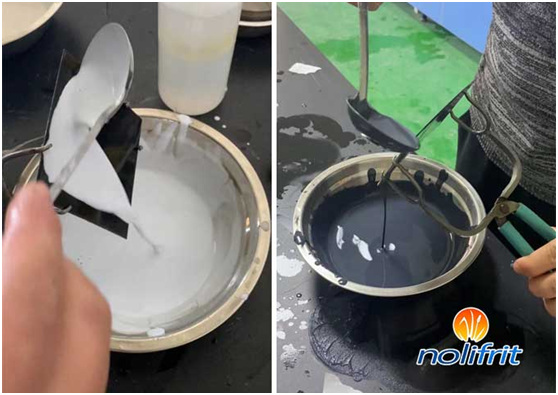Why is ground coat finer than the cover coat?
The thickness of the enamel paste has an impact on the enamelling operation and the quality of the enamel product. Generally speaking, the finer the enamel slurry, the better the suspension, the lower the firing temperature, the more fully the reaction between the enamel ground coat and the iron billet, and the better the adhesion strength of the ground coat. However, if the enamel slurry is too fine, the consistency of the enamel slurry will increase, making it difficult to coat and shrink. However, if the enamel slurry is too fine, it will lead to a decrease in suspension and easy precipitation.

The thickness of the enamel also determines the thickness of the coating. If the ground coat is thick, it will be a waste of enamel slurry and will also affect the follow-up process: defects such as pan ground coat black spots, screen bubbles, drawing lines, and poor elasticity.
Both enamel factories and master craftsmen know that the ground coat of enamel is generally thinner than the cover coat of enamel. Why is this?
The ground coat porcelain layer is generally controlled to 70-120um. Of course, 40-70um is better, as long as the embryo is fully covered and there are no burnt defects. The ground coat of the second enamelling and one firing process is only about 30-50um. If the enamel slurry is too fine, it is easy to scorch and crack, and there are defects in enamel loss; if it is too fine, the porcelain surface is not fine and smooth, and the gloss is poor. The bulk density (specific gravity) of the enamel slurry is generally around 178g/100g for one-time enamel. Ground coat 165g/100g. It depends on the actual situation.